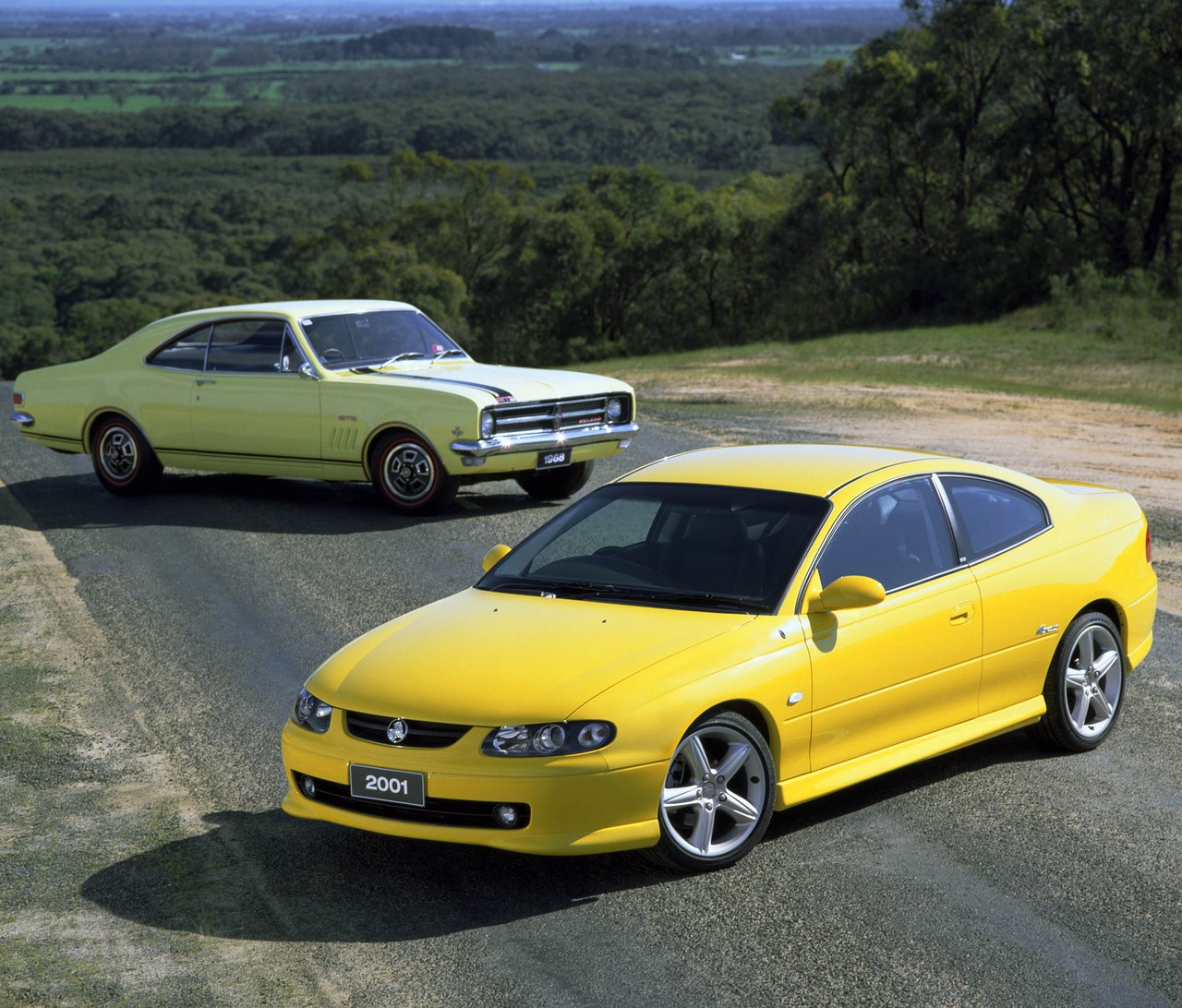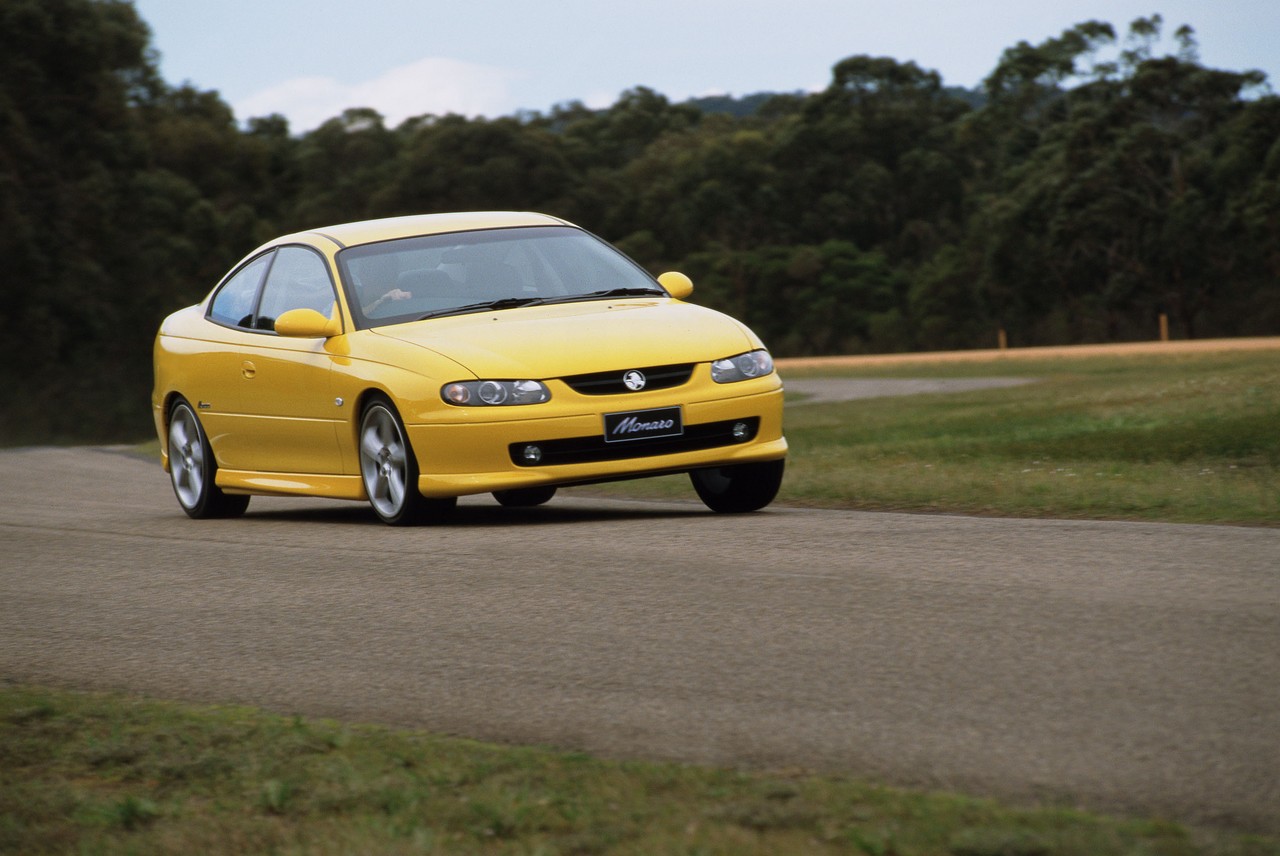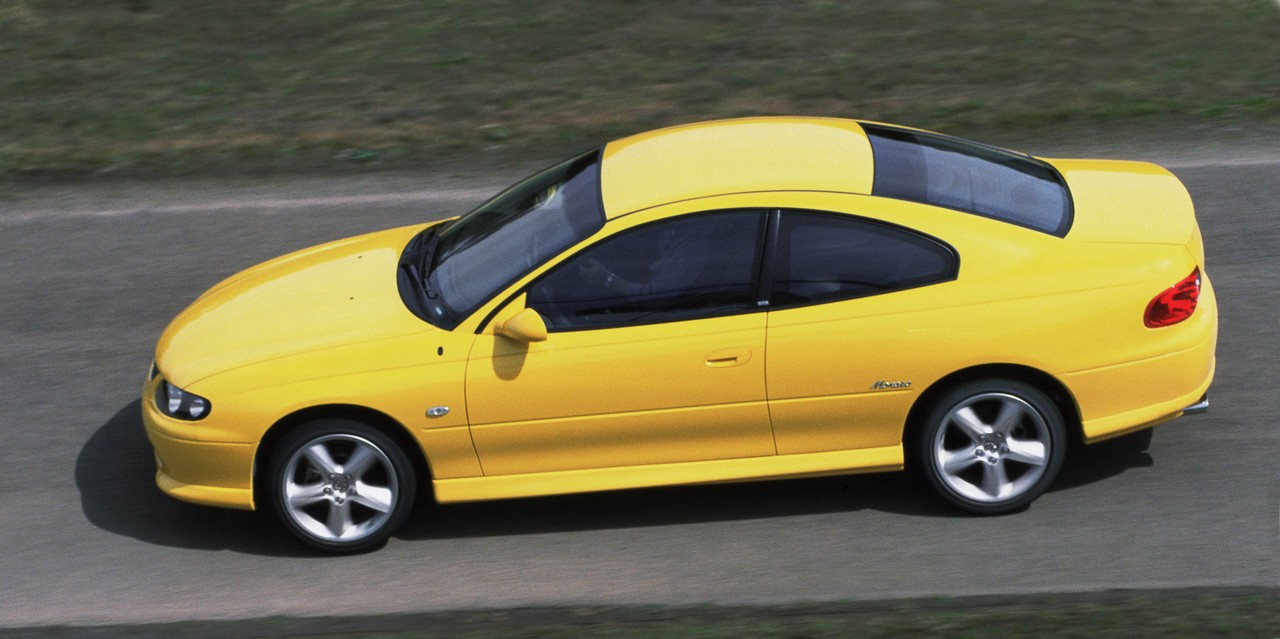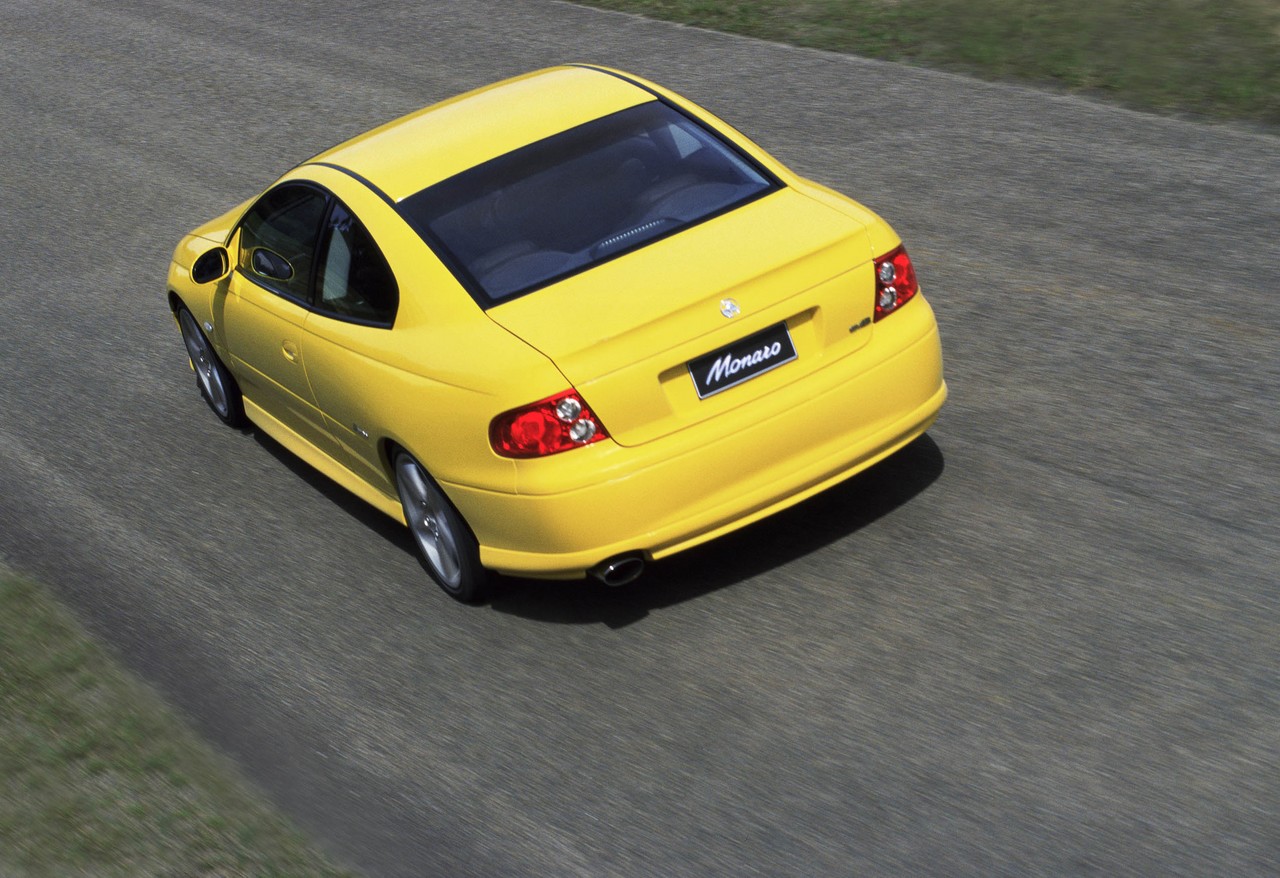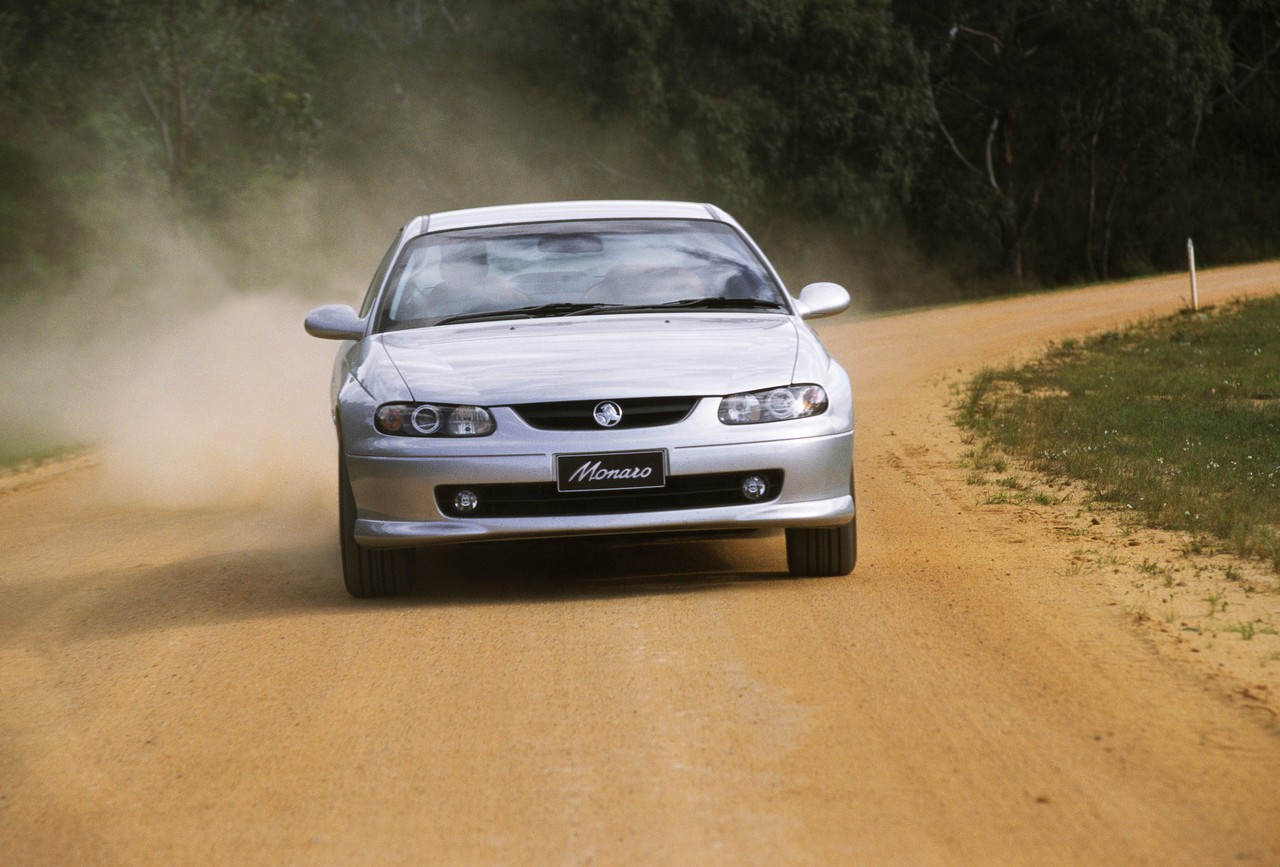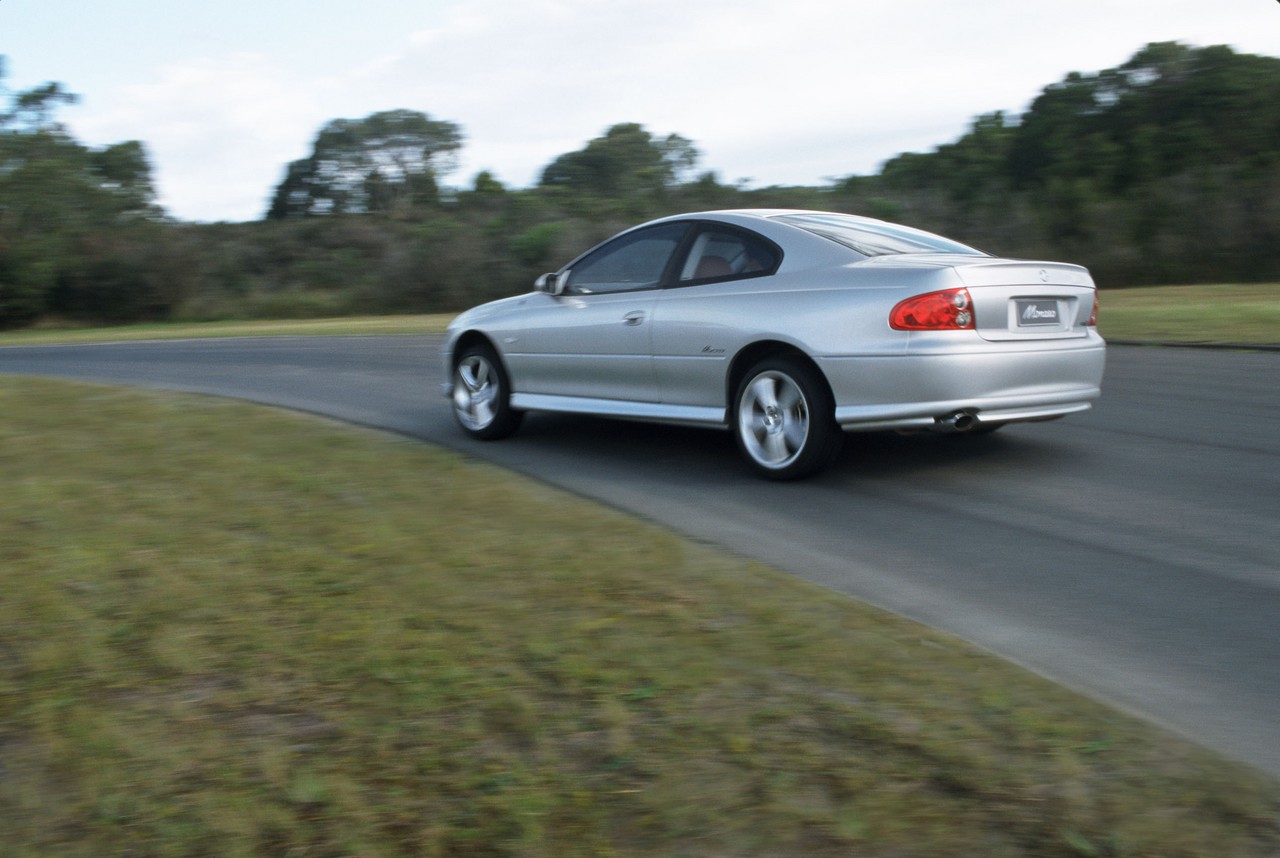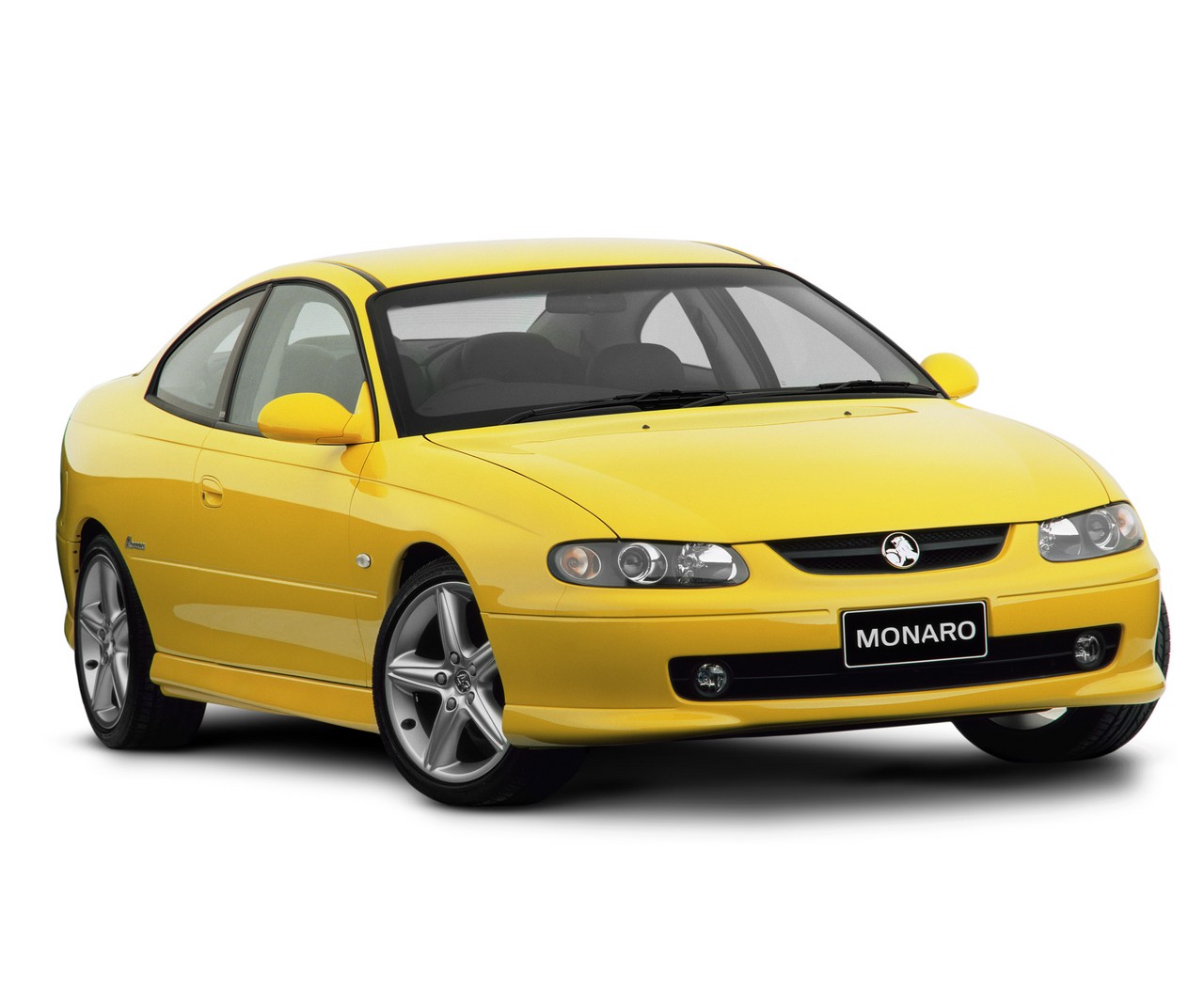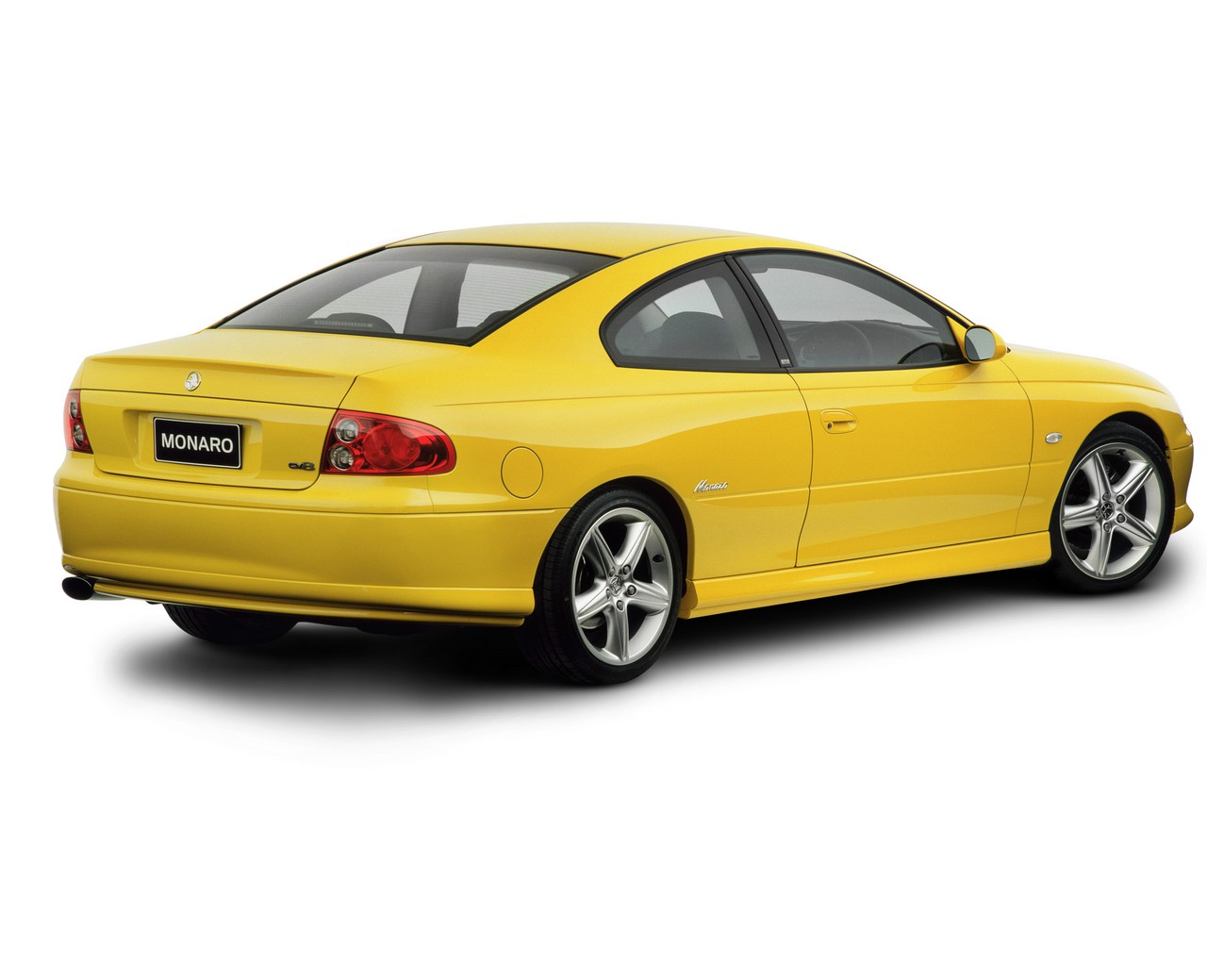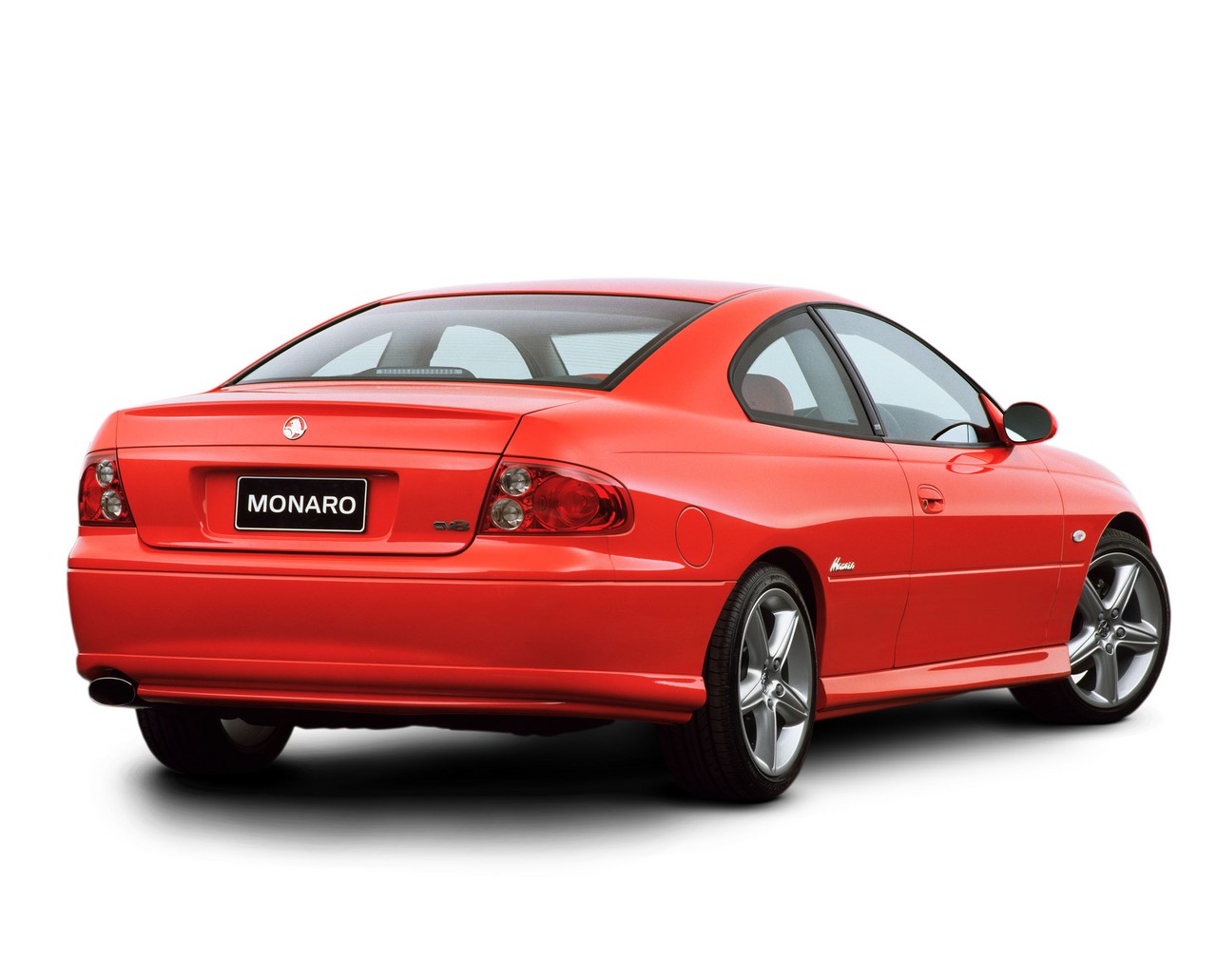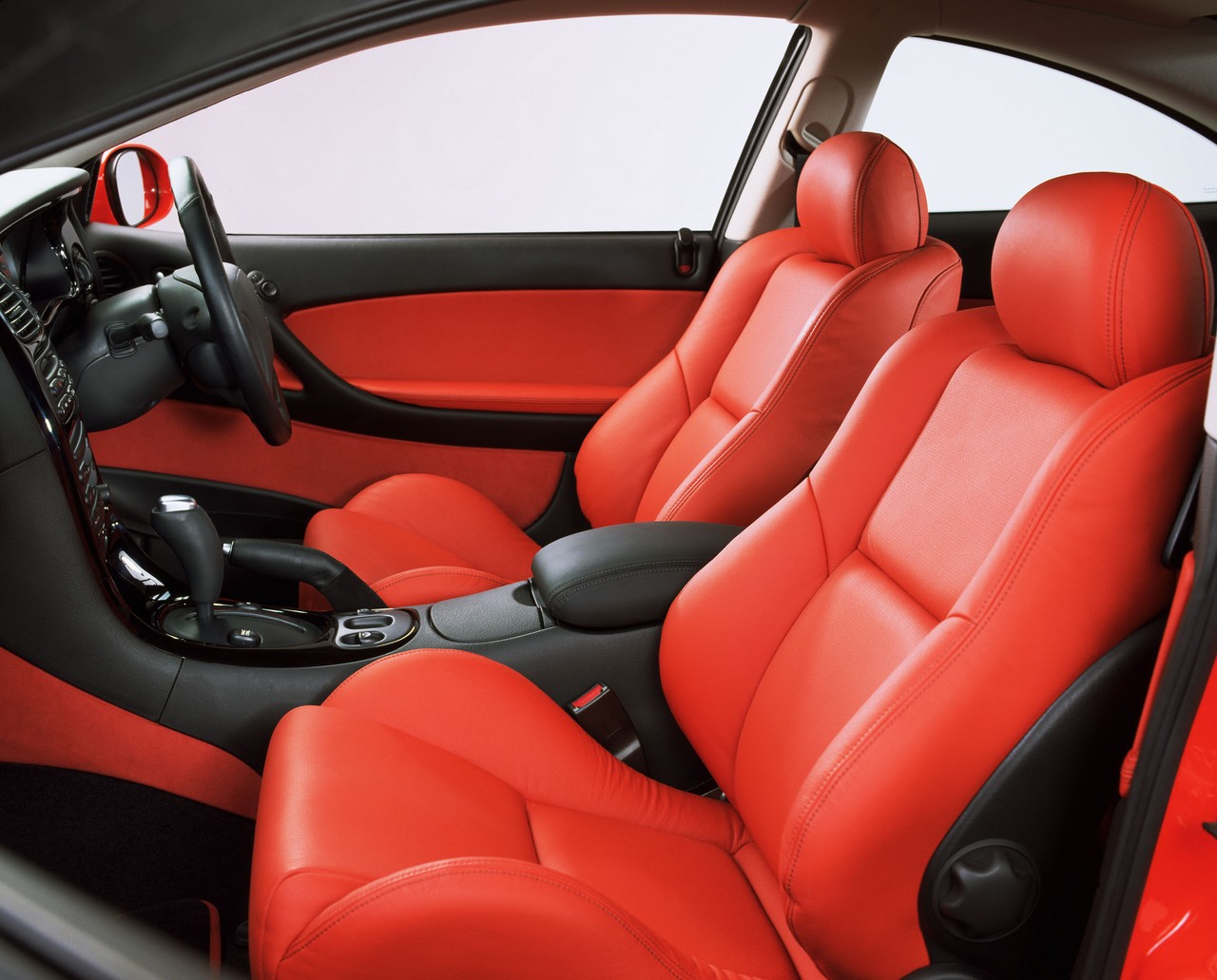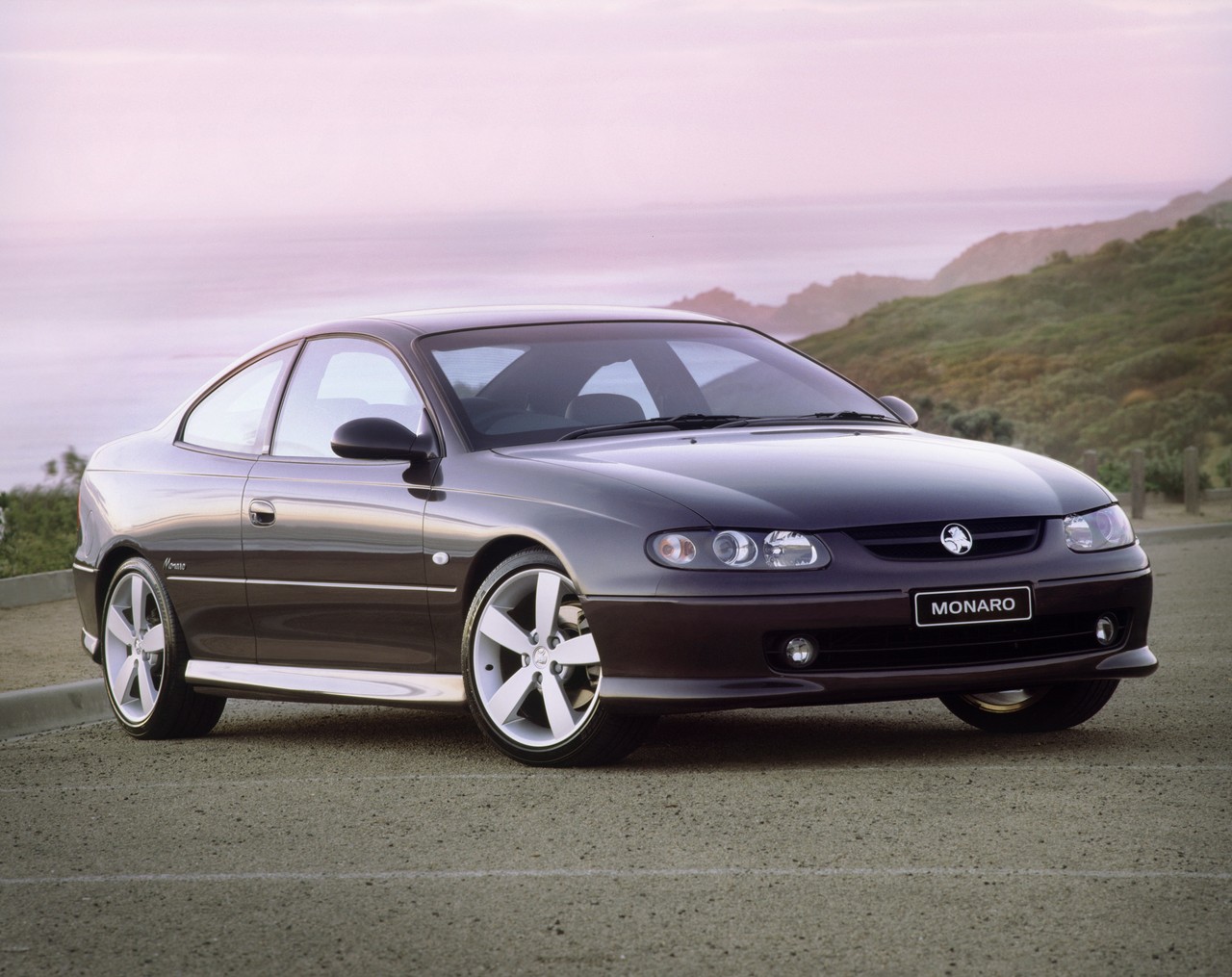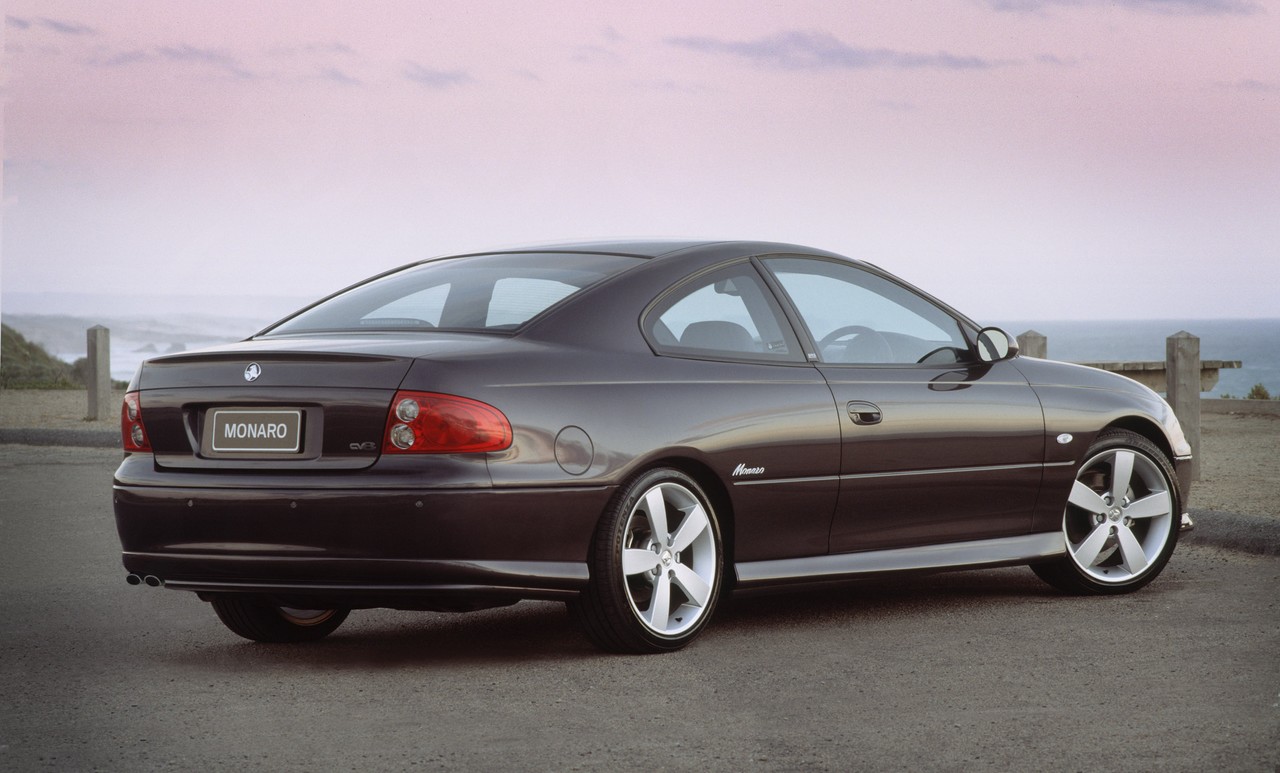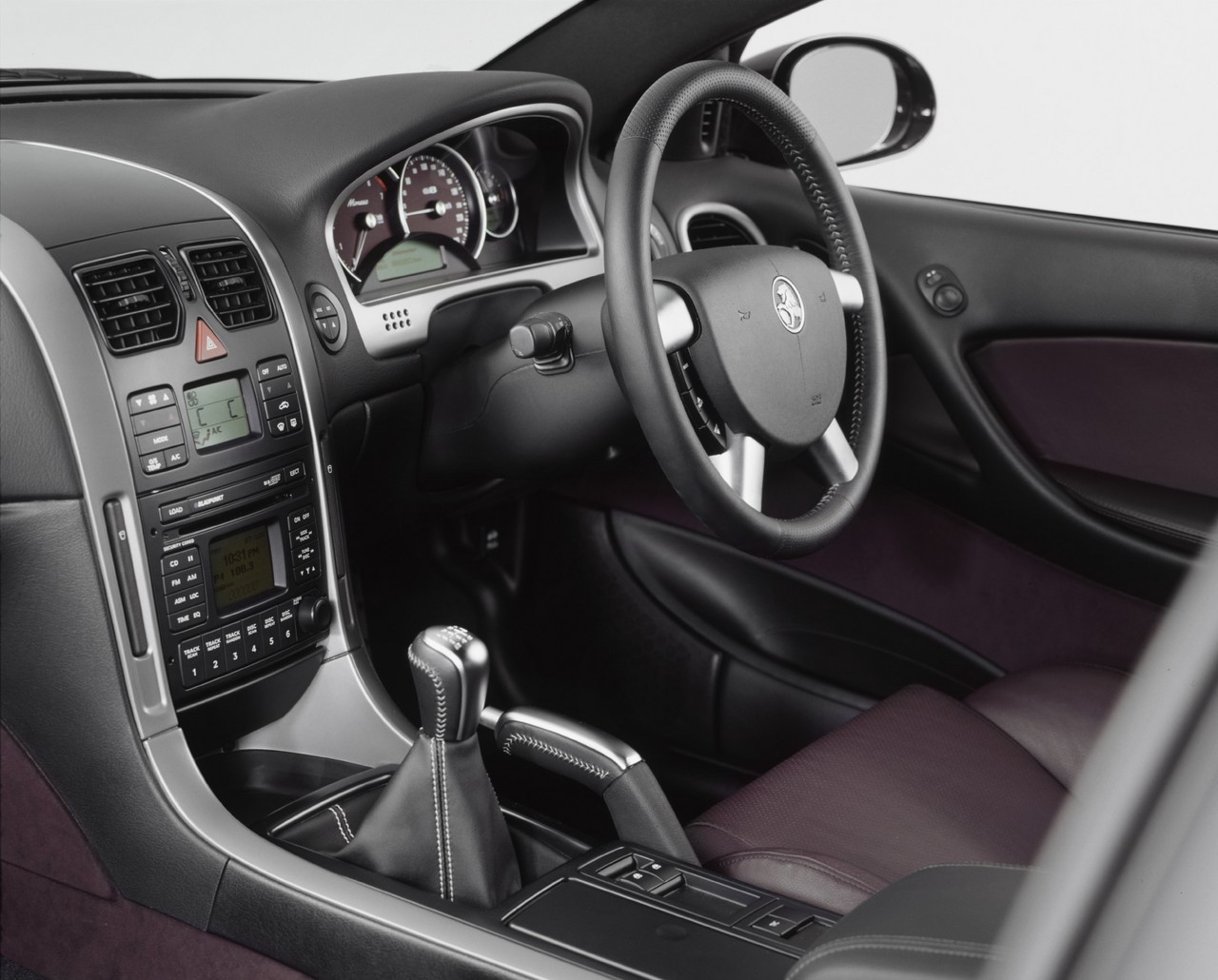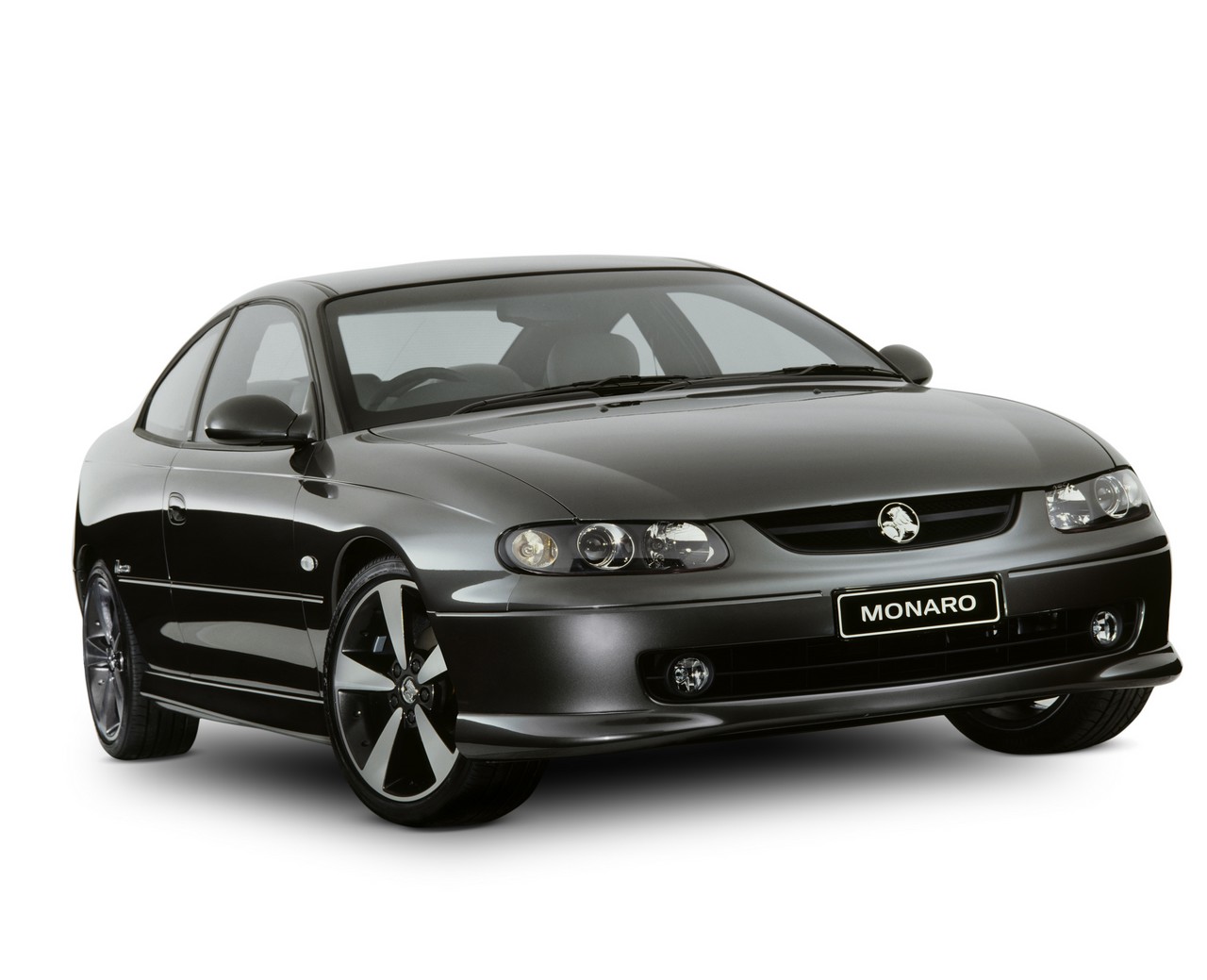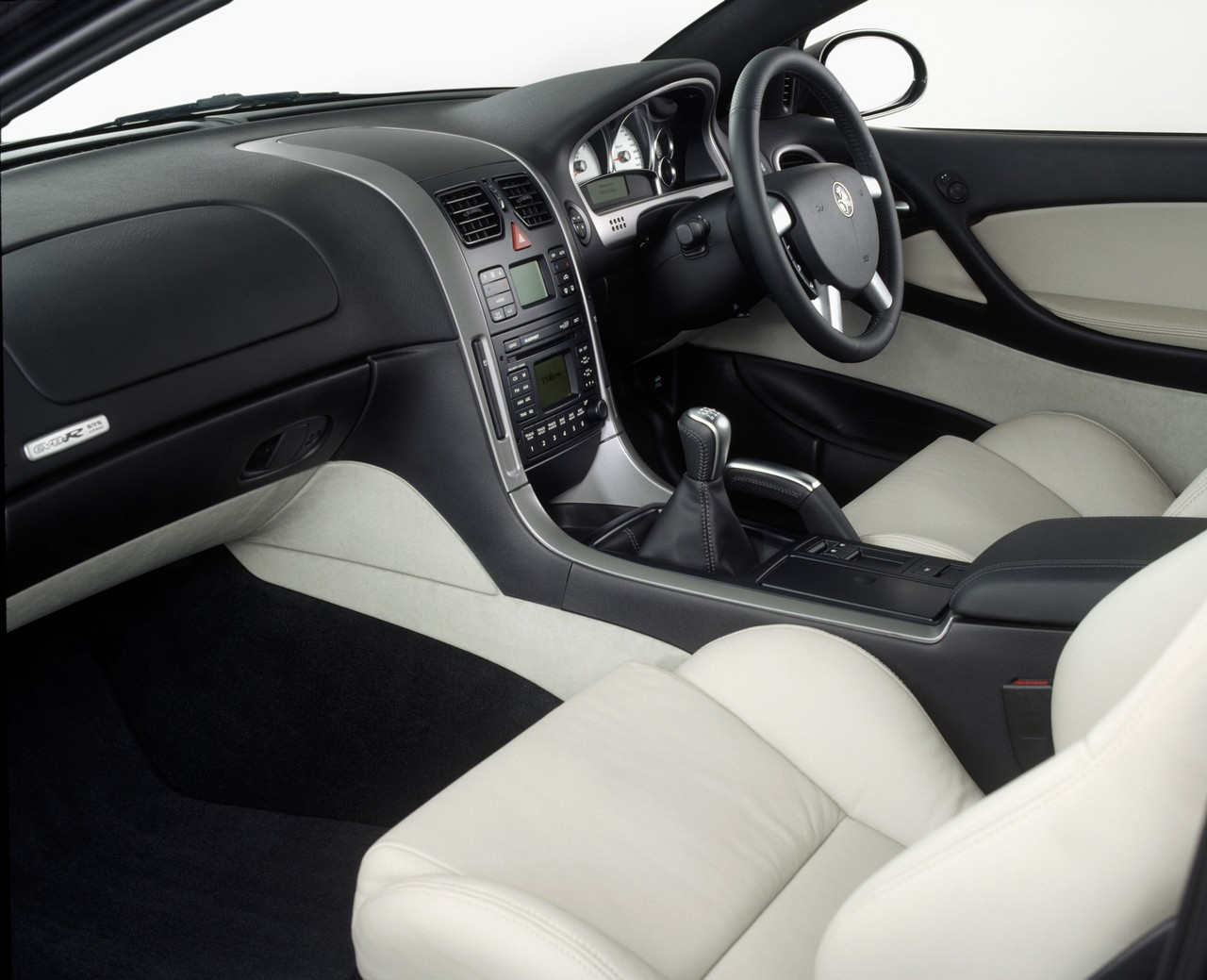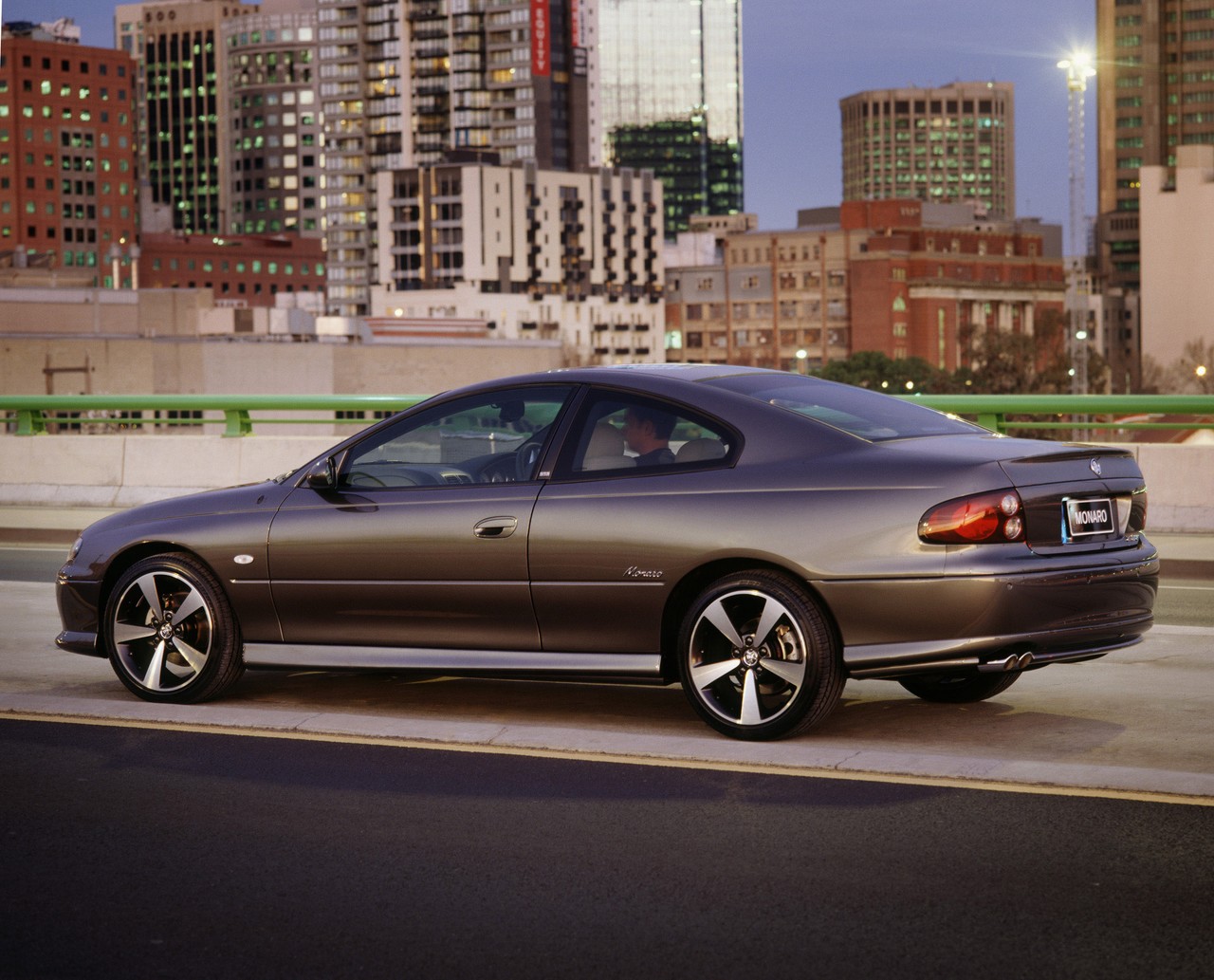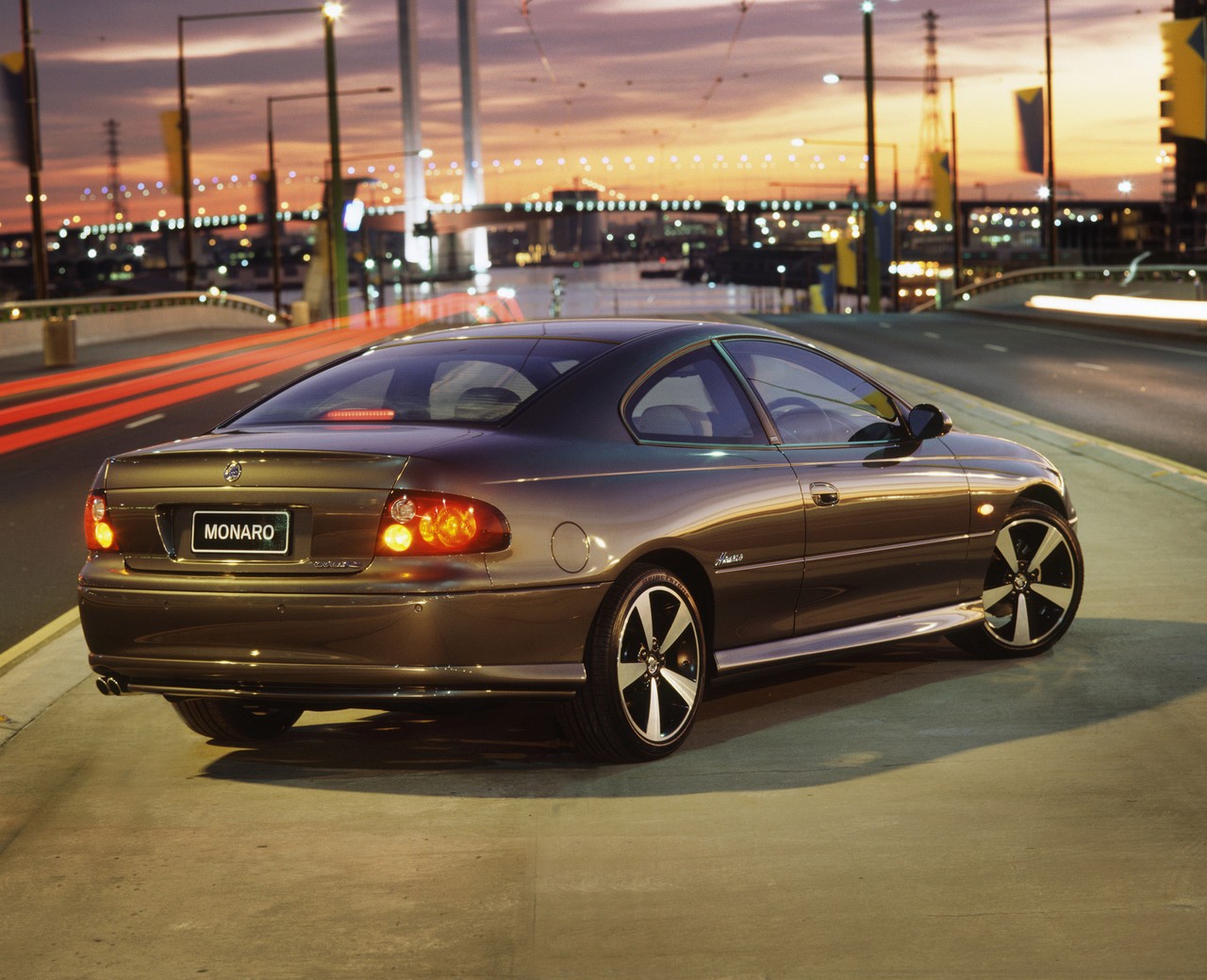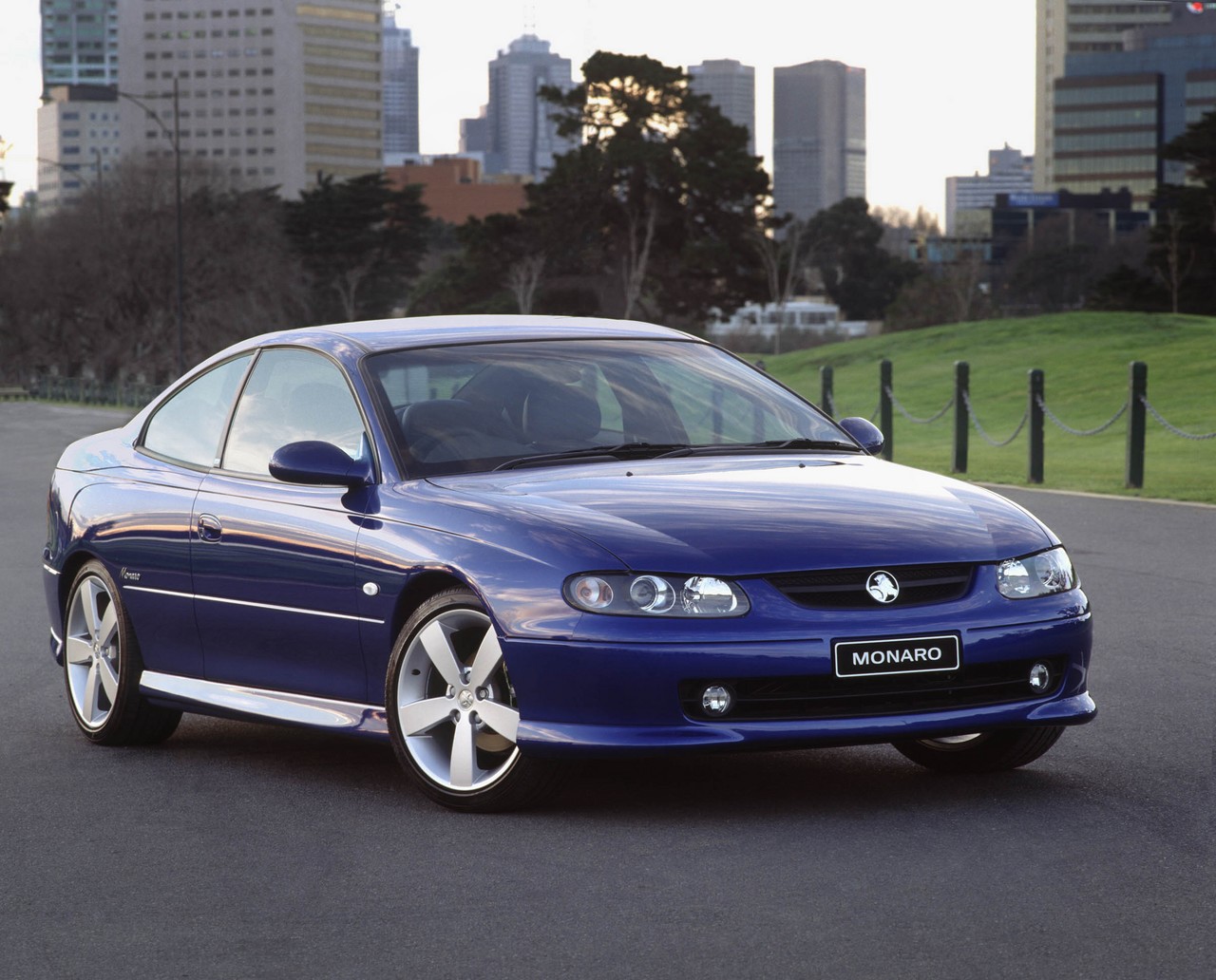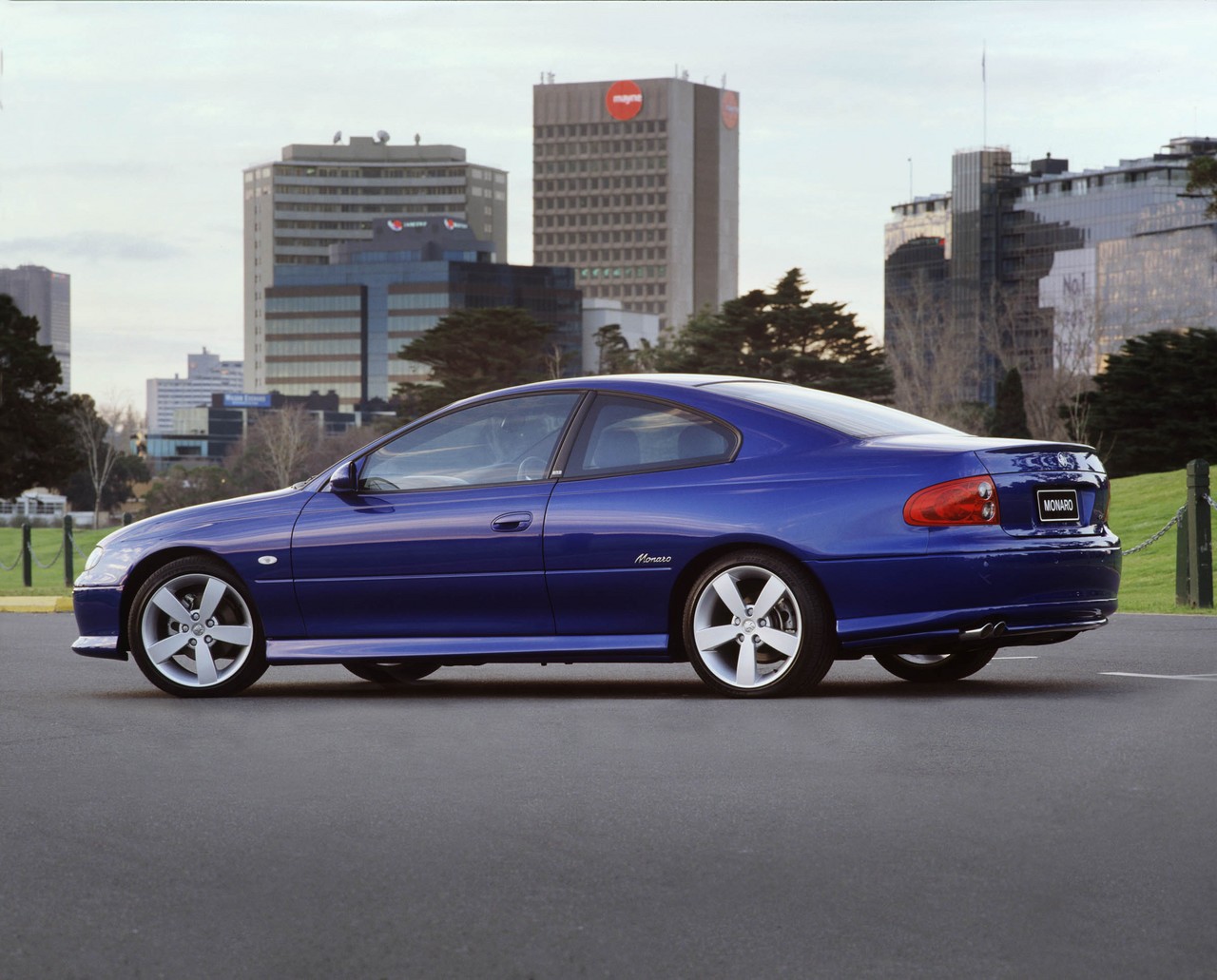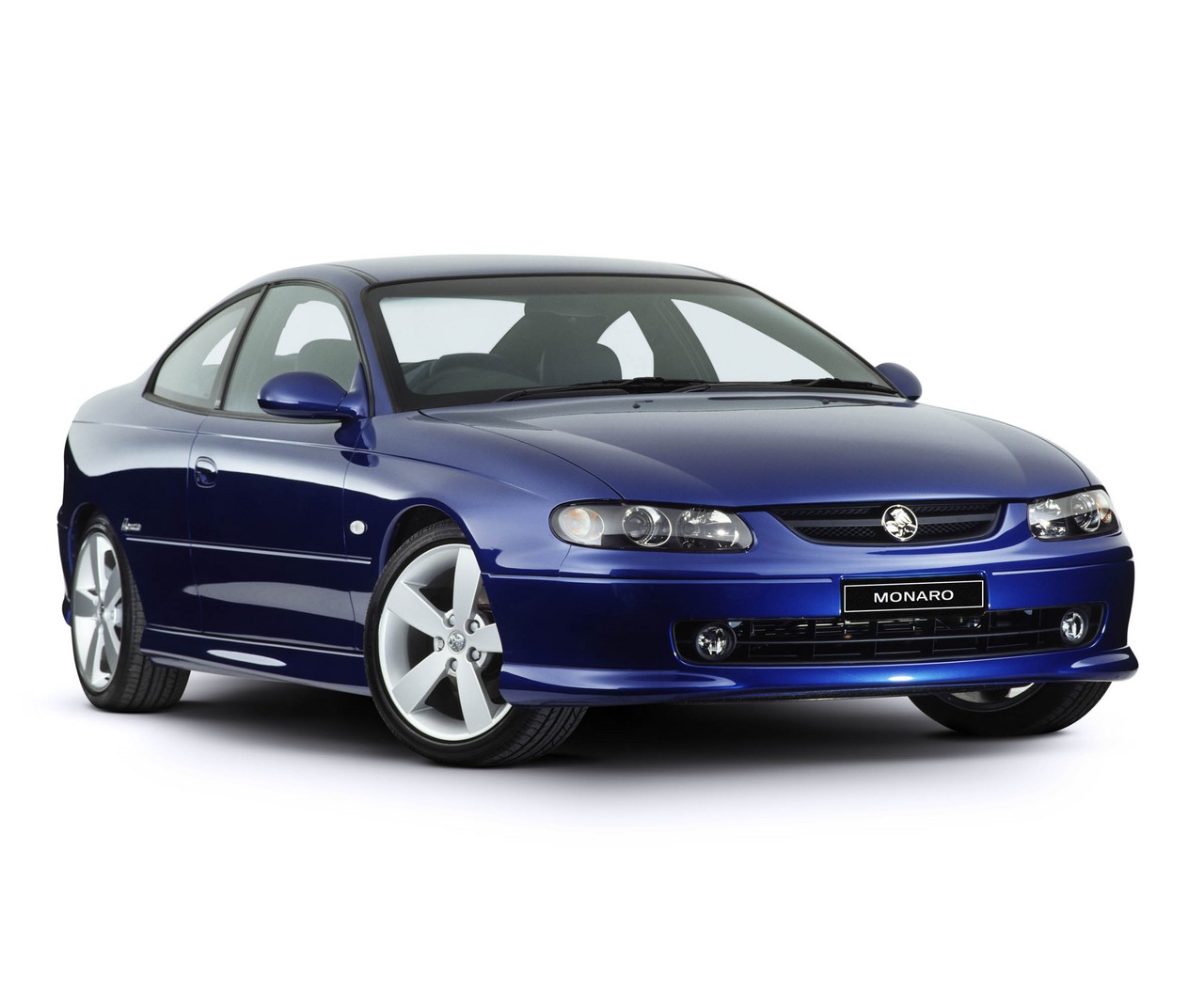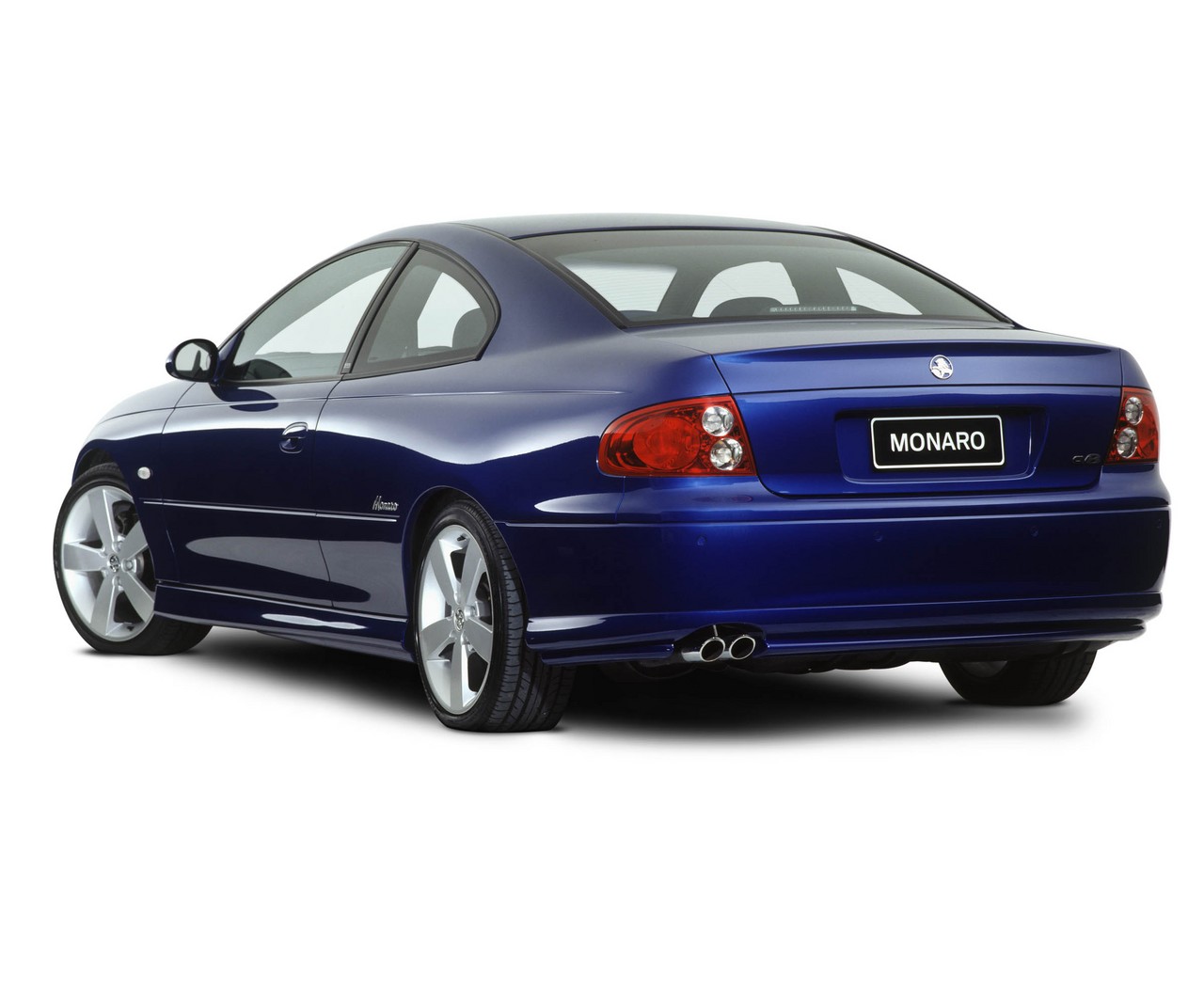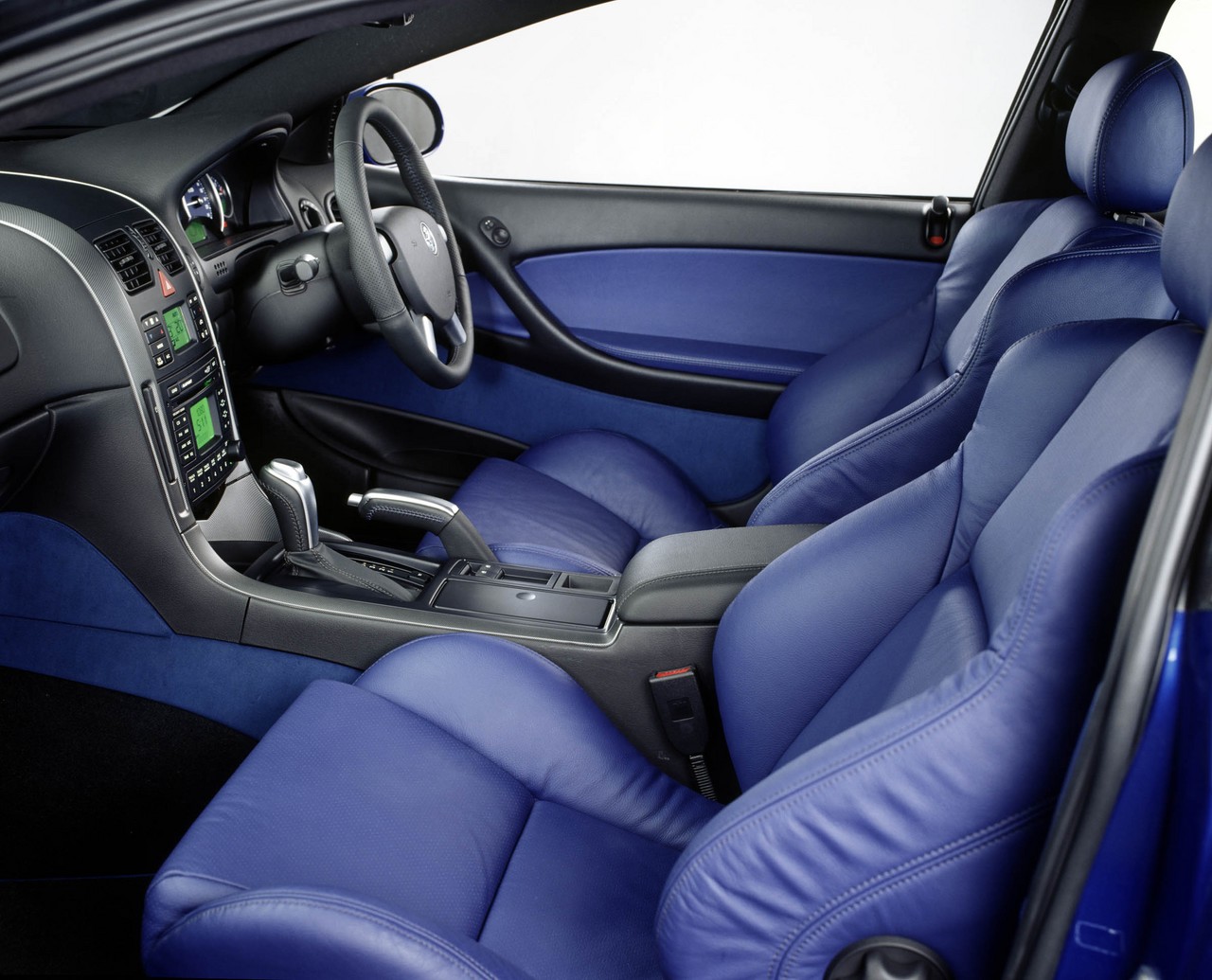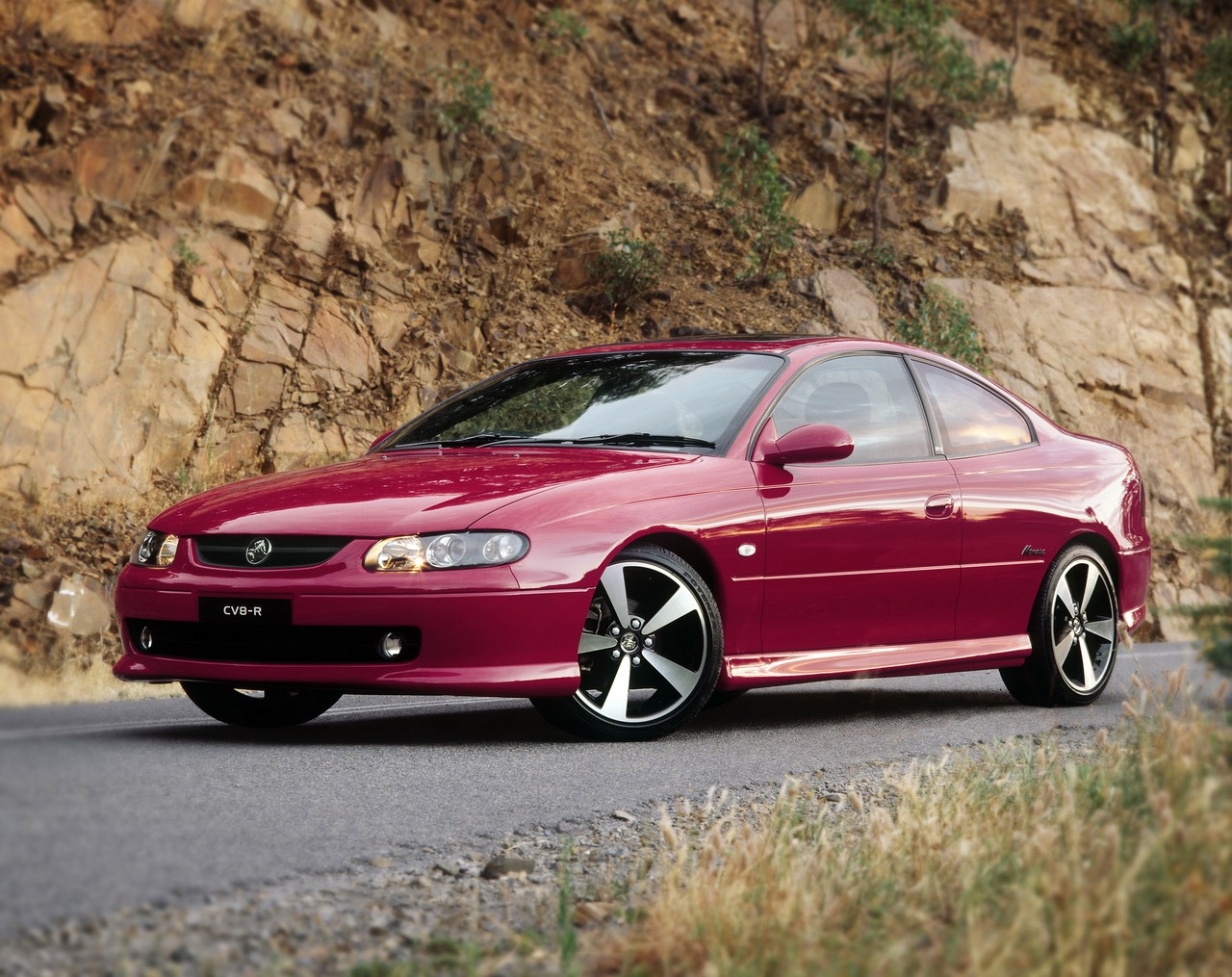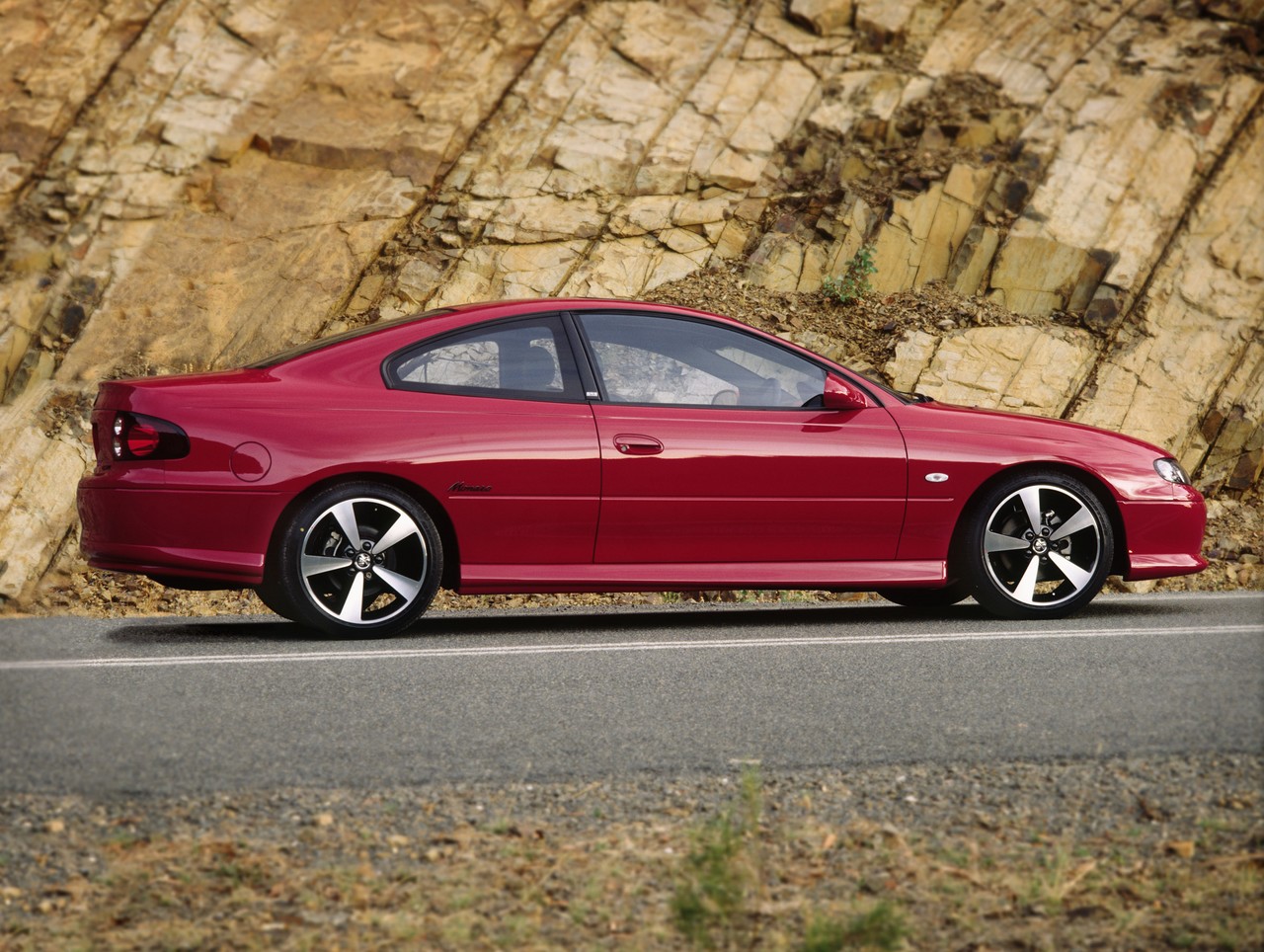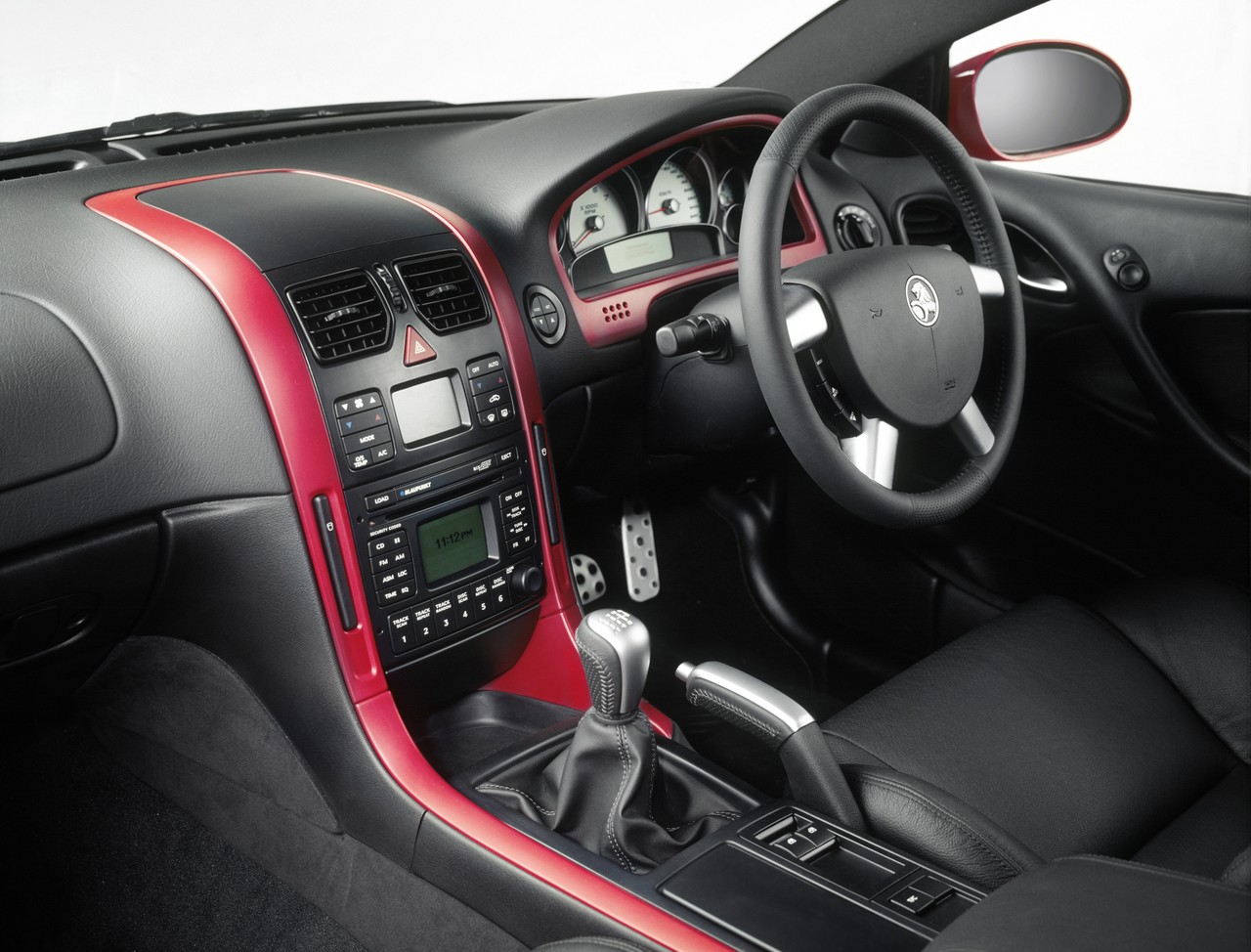
- Responsive 3.8-litre supercharged L67 V6 engine
- Powerful 5.7-litre LS1 V8 engine
- Competent dynamics
- Supportive front seats
- V6 engine coarse from 3000rpm
- Suspension bottoms out on uneven surfaces
- Automatic transmission provides clunky downshifts
- Slow steering lacks precision
- Tight rear seat access and rear occupants sit below glass
Holden V2.I Monaro (2001-02)
Overview
Released in October 2001, the Holden V2 Series I (V2.I) Monaro was a four-seat, two-door coupe. Manufactured in Elizabeth, South Australia, the rear-wheel drive V2 Monaro was available with 3.8-litre supercharged V6 or 5.7-litre V8 engines, for the CV6 and CV8 variants, respectively.
Engines: L67 V6 and LS1 V8
Of the engines
- The 3.8-litre L67 pushrod V6 petrol engine had a cast iron block and cylinder head, multi-port fuel injection, an Eaton M90 supercharger (which provided boost pressure of 6 psi or 0.41 bar), two valves per cylinder, a single balance shaft and a compression ratio of 8.5:1; and,
- The 5.7-litre LS1 pushrod V8 engine had all-aluminium construction, a 99 mm bore, 92 mm stroke, sequential multi-port fuel injection, flat-topped pistons, two valves per cylinder and a compression ratio of 10.1:1.
Transmissions: 4L60E and T56
While the supercharged V6 engine was solely available with the four-speed 4L60E automatic transmission, the V8 engine was also available with a six-speed Tremec T56 manual transmission.
Development and dimensions
The V2 Monaro was developed following the public response to Holden’s coupe concept which was unveiled at the 1998 Sydney International Motor Show. Fully designed and validated ‘virtually’ using Simultaneous Math Based Process (SMBP) technology, the V2 Monaro was the product of a 22 month, $60 million development program: $40 million for plant tooling and $20 million for design and engineering.
Compared to the VX Commodore on which it was based, the V2 Monaro was 102 mm shorter (at 4789 mm), 1 mm narrower (1841 mm) and 53 mm lower (1397 mm), but had the same wheelbase length (2788 mm); furthermore, its drag coefficient was 0.31 Cd. For the V2 Monaro, windscreen rake was increased by two degrees, the B-pillar was relocated rearward to accommodate 150 mm longer front doors and rear overhang was reduced by 100 mm. The Monaro’s bending rigidity was 23 per cent greater than the VX.II Commodore, while torsional rigidity was 5 per cent greater.
Suspension
The V2 Monaro had MacPherson strut front suspension and Holden’s ‘Control Link’ independent rear suspension (IRS) with semi-trailing arms. Relative to the VX Commodore, suspension changes for the V2 Monaro included revised front and rear springs, thicker stabiliser bars and retuned shock absorbers.
| Engine | Trans. | Peak power | Peak torque | |
|---|---|---|---|---|
| Monaro CV6 | 3.8-litre L67 s/charged petrol V6 | 4sp auto | 171 kW at 5200 rpm | 375 Nm at 3000 rpm |
| Monaro CV8 | 5.7-litre LS1 petrol V8 | 4sp auto, 6sp man. |
225 kW at 5200 rpm | 460 Nm at 4400 rpm |
Safety equipment
Standard safety equipment for the V2 Monaro included dual front airbags, front side airbags, ABS, traction control and front seatbelt pretensioners.
Brakes
The V2 Monaro had 296 mm by 28 mm vented front brake discs with twin-piston calipers and 286 mm by 16 mm solid rear discs with single piston calipers.
Features: Monaro CV6 and CV8
Standard features for the Monaro CV6 included 17-inch alloy wheels with low-profile 235/45 R17 Bridgestone tyres, an 80 watt sound system with six speakers and a CD player, air conditioning, Anthracite black leather seats and door trim, eight-way power adjustable front seats with power-assisted sliding for rear seat access, cruise control with speed alert, front fog lights, automatic headlights, a leather-wrapped steering wheel with audio controls, remote central locking, power windows and mirrors, a height and reach adjustable steering wheel, 12 volt power outlet, power-operated antenna, a six function trip computer, an alarm and immobiliser.
The Monaro CV8 was further equipped with 18-inch alloy wheels with low-profile 235/40 R18 Bridgestone tyres, a limited slip differential, a 260 watt sound system with ten speakers and a 10-disc CD changer, dual zone climate control air conditioning, automatic headlights, approach lighting, courtesy lamps, driver’s seat memory settings, leather-wrapped gearshift and handbrake levers, Piano Black dash fascia finish, stainless steel door sill plates and a twelve function trip computer.
Related links
Holden V2.II Monaro (2002-03)
Overview
Released in December 2002, the V2 Series II (V2.II) Monaro introduced mechanical upgrades and a revised interior. Mechanically, the V2.II Monaro introduced the ‘high output’ 5.7-litre Gen III V8 (with a full-length twin exhaust system), revised automatic transmissions (with greater durability for the V8 engines), service intervals for the supercharged 3.8-litre V6 were extended to 15,000 kilometres and it was also fitted with a ‘dampolator’ for freer-revving beyond 4000 rpm.
With the exception of its new five-spoke alloy wheels, exterior styling was substantially unchanged. Inside, however, there was a new instrument panel with binnacle-style clusters, a multi-function digital display and a new steering wheel design.
| Engine | Trans. | Peak power | Peak torque | |
|---|---|---|---|---|
| Monaro CV6 | 3.8-litre L67 s/charged petrol V6 | 4sp auto | 171 kW at 5200 rpm | 375 Nm at 3000 rpm |
| Monaro CV8 | 5.7-litre LS1 petrol V8 | 4sp auto, 6sp man. |
235 kW at 5200 rpm | 465 Nm at 4400 rpm |
Safety equipment
Compared to its predecessor, safety for the V2.II Monaro was improved through the introduction of load-limiting front seatbelt retractors; structural reinforcements also reduced the risk of lower limb injury.
Features
As part of the V2.II update, standard features were extended to include new Blaupunkt sound system systems with speed dependent volume control, ‘twilight sentinel’ headlights (automatic shut-down after 60 minutes of inactivity) and a 12 volt power outlet under the centre console. The Monaro CV8 was fitted a six-stack CD player (previously 10-disc unit) and rear parking sensors.
2003 Monaro CV8-R
In July 2003, the limited-run Monaro CV8-R was released. Compared to the standard CV8, the CV8-R was distinguished by its unique 18-inch alloy wheels, light shale leather interior, unique instrument cluster with white dials and leather-wrapped steering wheel, handbrake and gearshift, front and rear lamps with ‘silver vision’ globes and chrome exterior highlights.
Related links
- Holden Media Archive: The Holden Monaro Series II (December 2002)
- Holden Media Archive: 2003 Special Edition Monaro CV8-R (July 2003)
Holden V2.III Monaro (2003-04)
Overview
Released in August 2003, the V2 Series III (V2.III) Monaro range consisted solely of CV8 variants as the CV6 was discontinued. Coinciding with the release of the VY.II Commodore range, the 5.7-litre V8 engine for the V2.III Monaro produced 245 kW due to a higher-output tune, calibration changes reduced tailpipe emissions and a front strut brace was fitted for greater front-end rigidity.
| Engine | Trans. | Peak power | Peak torque | |
|---|---|---|---|---|
| Monaro CV8 | 5.7-litre LS1 petrol V8 | 4sp auto, 6sp man. |
245 kW at 5600 rpm | 465 Nm at 4400 rpm |
Safety equipment
Safety equipment for the V2.III Monaro was improved with the fitment of active front seat head restraints. Furthermore, all V2.III Monaros were fitted with audible and visual driver’s seatbelt warnings and steering column modifications to reduce the risk of occupant injury.
ANCAP crash testing
In ANCAP crash testing , post-February 2004 Monaro CV8 vehicles received a four star adult occupant protection rating with a score of 26.89 out of 37. In the offset crash test, the passenger compartment held its shape well but protection from serious chest injury was marginal for the front passenger. In the side impact test, there was a moderate risk of serious abdomen injury for the driver.
Features
Features were substantially the same as for the V2.II Monaro, though the radio antenna was integrated into the rear glass.
2004 Monaro CV8-R
In May 2004, a limited R edition of the V2.III Monaro was released. Compared to the standard Monaro, the CV8-R featured five-spoke 18-inch machined-face alloy wheels with graphite ports, a power sunroof, front and rear lamps with ‘silver vision’ globes, black bezels on rear lamps, centre fascia and instrument surrounds finished in Pulse Red, white dial-plate instrument cluster, perforated leather seat inserts, Anthracite leather steering wheel, handbrake and gearshift, and Pulse Red paint finish.
Related links
- Holden Media Archive: Holden Adds Refinement Across The Range (August 2003)
- Holden Media Archive: Holden’s 2004 Limited Edition Monaro CV8-R (April 2004)
- Wikipedia.org: Holden Monaro (third generation)
